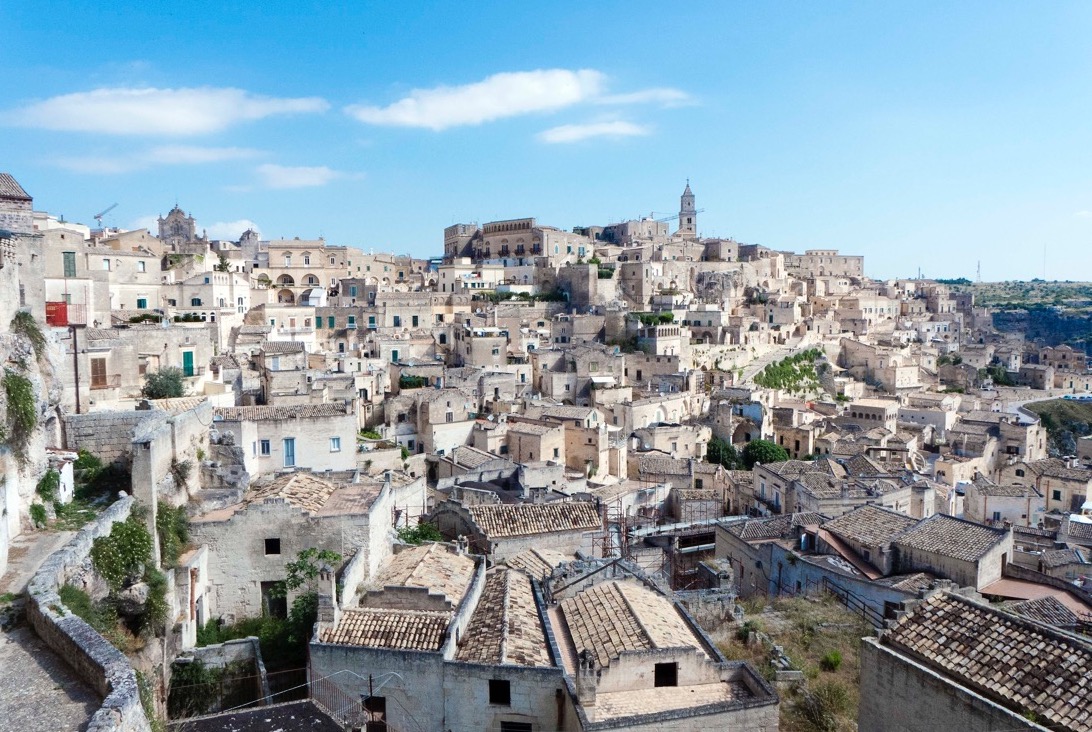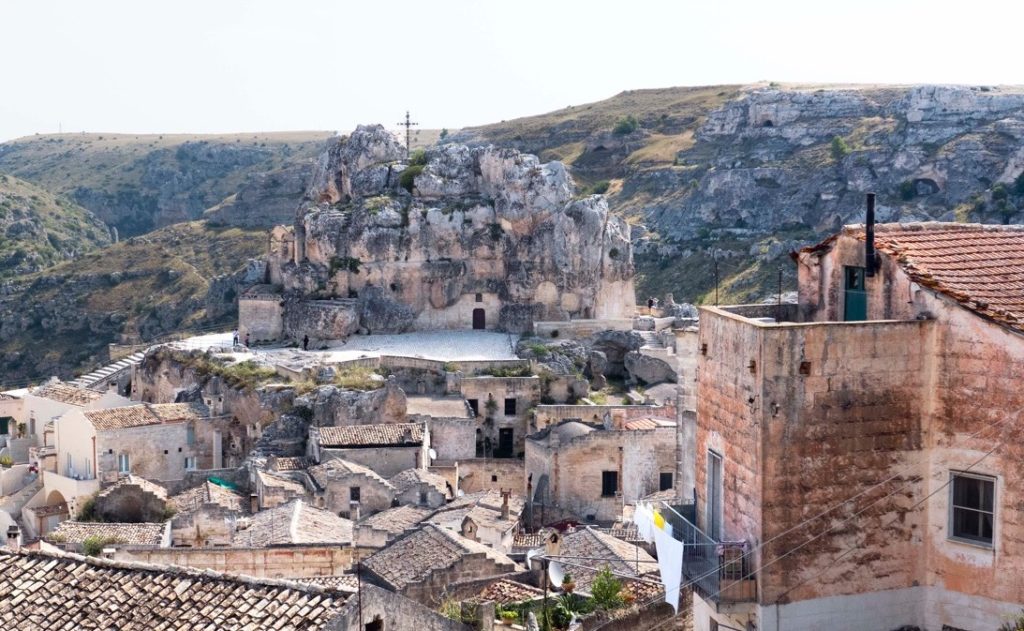
09 Jan MATERA – A CITY FROM ANOTHER TIME
As you look out over the sassi districts in the city of Matera, you could be forgiven for thinking you had been transported back in time to a city out of the bible. The view of stone dwellings, reaching far back into ancient caves, with narrow donkey paths winding in between them, is quite unforgettable. Indeed film director Mel Gibson used this city as the setting for his movie The Passion of the Christ.
Matera, in Basilicata just to the west of Puglia, is probably the oldest continuously inhabited city in the whole of Europe. Matera is built on top of a cliff on the edge of a gorge, about 250 metres deep, with a river running through it. There is a stratum of stone that is soft and white, like a cross between sandstone and limestone, and since prehistoric times people have burrowed out shelters into the sides of the gorge. Over time they became more sophisticated than simple holes in the rock, though some of those still remain and were used as animal shelters by shepherds or as wine cellars. People began building small structures at the front incorporating the door, the window and the kitchen with its chimney and would then excavate the other rooms into the rock behind. Others would build into the rock above them, so the whole place became like an anthill, with people living one on top of another in chambers carved out of the rock with little frontages to allow for kitchens and chimneys, a bit of light. There might only be a metre and a half of rock between the ceiling of one dwelling and the floor of the one above it.

Later Matera became the capital of Basilicata and work began to gentrify the city on the top of the ravine. There was no burrowing there, as the rock was too hard, but the erection of high quality standard buildings instead. An upper class moved in to administer the area and provide services, so the two sassi areas became places where the poor lived. It became a shameful thing to live in the sassi, and the upper city was built to deliberately hide any view of these poor areas from the centre of town. Later however, Matera lost its position as regional capital and the wealthier people moved on. Without the investment of the elite, living conditions in the sassi became appalling with no running water, no sewerage and no roads. The area became a hotbed of disease – malaria, cholera, typhoid, tuberculosis. It wasn’t until a novelist wrote a book about the area that the Italian government sat up and took notice. In the 1950s they began a slum clearance program to move the 17,000 residents out of the area and it was abandoned.
In the late 1980s the area began to be revalued and became a World Heritage site. People started restoring dwellings and moving back in while today the government will lease dwellings to those who are prepared to pay for restoration. There are lots of hotels and B&Bs springing up and tourism is beginning to really bite. In 2019 Matera is the European Cultural Capital which will also have a huge effect on visitor numbers.
Matera is definitely a place to see right now, before the rest of the world arrives. Our Puglia, the Road Less Travelled tour for May 2019 is already sold out but we do have places available on the September 2019 tour which includes a wonderful day exploring the town of Matera.
